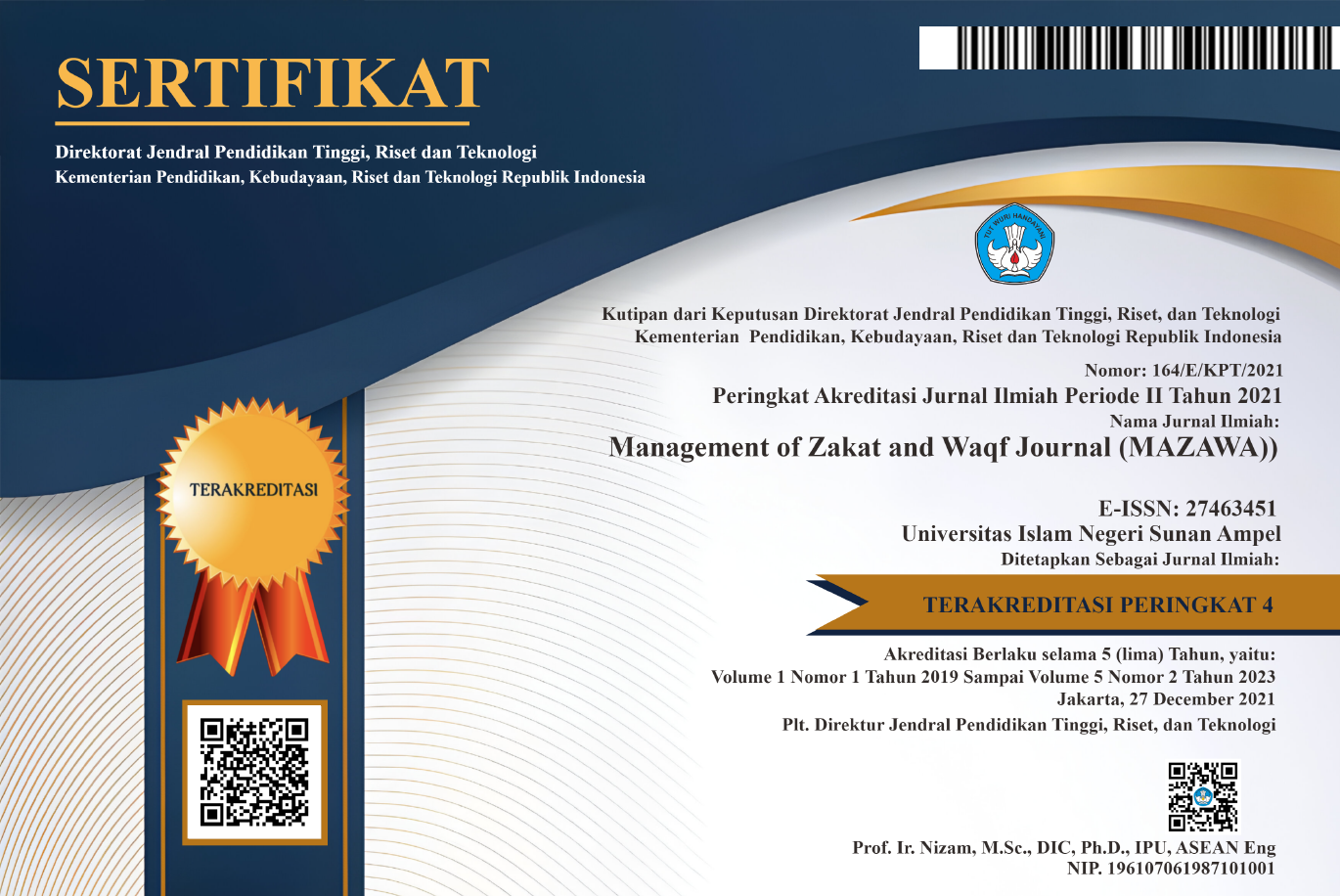Membangun Ketahanan dan Pengembangan Pondok Pesantren Melalui Manajemen Wakaf di Pesantren Tebuireng, Jombang
DOI:
https://doi.org/10.15642/mzw.2022.3.2.31-50Keywords:
Pesantren Tebuireng, Waqf, Resilience and Development of PesantrenAbstract
Tebuireng is one of the pesantren that participates in creating the nation's generation. Since the time of Hadratussyaikh KH. M. Hasyim Asy'ari, Pesantren Tebuireng has been donated (waqf) for the progress of Muslims and shiar for deen. Today, Pesantren Tebuireng continues to grow by inaugurating branches that spread throughout the archipelago. From this phenomenon, the researchers want to examine how Pesantren Tebuireng maintains resilience and continues to develop which is supported by waqf? Second, what types of waqf are managed by Pesantren Tebuireng so that they not only maintain resilience but also continue to grow. With qualitative-descriptive research, researchers explore data through interviews and literature review, both scientific journals and books. The results obtained from the field research, the researchers concluded that 1) Pesantren Tebuireng established a Quality Assurance Unit to be able to adapt to scientific developments so that the waqf was obtained by Pesantren Tebuireng can be managed with the latest scientific developments. In this case, the Quality Assurance Unit proposes the establishment of the Pesantren Tebuireng's Waqf Board (Badan Wakaf Pesantren Tebuireng); 2) waqf at Pesantren Tebuireng started from land waqf, penetrated productive waqf, penetrated cash waqf with management that follows the times, namely trustworthy and professional.
Downloads
Downloads
Published
How to Cite
Issue
Section
License
Copyright (c) 2022 Ahmad Faozan, Haris Supratno

This work is licensed under a Creative Commons Attribution-NonCommercial-ShareAlike 4.0 International License.





